THE

BREAD COOKBOOK
Dear Reader,
There is only one thing better than the smell of fresh-baked bread, and thats smelling it in your own kitchen.
Homemade bread is the most satisfying food a cook can create. The process is empowering, the method is stress relieving, and the result is the definition of comfort. But sadly, few people bake bread anymore. Why should they? With artisan bakeries on every Main Street, and a plethora of mediocre grocery store breads at the ready, there is really no need.
But if youre an adventurous cook, and you dare enter the realm of yeast bread, a multitude of glories await you. Bread bakers reap benefits, not only of a gastronomical nature, but of an intellectual and spiritual nature as well.
So if youre a lover of good food, and you enjoy cooking, youre in the right place. You will delight in this collection of recipes, which includes not only the classic staples, but a repertoire of artisan, off-beat traditional, and artfully unique recipes. The explanations are simple, and the results are impressive. But beware! Once you start baking bread, youll be hooked.
Happy baking,
Leslie Bilderback, CMB
Welcome to the  Series!
Series!
These handy, accessible books give you all you need to tackle a difficult project, gain a new hobby, comprehend a fascinating topic, prepare for an exam, or even brush up on something you learned back in school but have since forgotten.
You can choose to read an Everything book from cover to cover or just pick out the information you want from our four useful boxes: e-questions, e-facts, e-alerts, and e-ssentials. We give you everything you need to know on the subject, but throw in a lot of fun stuff along the way, too.
We now have more than 400 Everything books in print, spanning such wide-ranging categories as weddings, pregnancy, cooking, music instruction, foreign language, crafts, pets, New Age, and so much more. When youre done reading them all, you can finally say you know Everything!

PUBLISHER Karen Cooper
DIRECTOR OF ACQUISITIONS AND INNOVATION Paula Munier
MANAGING EDITOR, EVERYTHING SERIES Lisa Laing
COPY CHIEF Casey Ebert
ACQUISITIONS EDITOR Katrina Schroeder
ASSOCIATE DEVELOPMENT EDITOR Hillary Thompson
EDITORIAL ASSISTANT Ross Weisman
EVERYTHING SERIES COVER DESIGNER Erin Alexander
LAYOUT DESIGNERS Colleen Cunningham, Elisabeth Lariviere, Ashley Vierra, Denise Wallace
Visit the entire Everything series at www.everything.com
THE
EVERYTHING
BREAD
COOKBOOK
Leslie Bilderback, CMB

This book is dedicated to Bill, Emma, and
Claire. Together, you are my bubbling yeast.
Without you, life would be flat and flavorless.
Introduction
IN THE OLDEN DAYS, if you didnt know how to make bread, you went hungry. It was an essential element of life, like drawing water from a well. Although progress has advanced technologies in many wonderful ways, it has all but eliminated the need for many of the ancient household arts, including scratch baking.
Cooking in general has suffered in the age of fast food and TV dinners. Skills that were once passed on from mother to daughter must now be self-taught. But no cooking discipline has suffered quite like baking. The air of precision and aura of chemistry surrounding it has scared away even the most able professional chefs.
But there is a secret about baking: Its not that precise, and its not that hard. In fact, it is no harder than making a sandwich, as long as you understand the process. But it is the process that scares people away. Consequently, bread bakers have become a rare breed. We feel, and are treated, like the medieval keepers of a sacred knowledge. But, as you are about to discover, the sacred knowledge is not complicated. In fact, bread-making techniques, so long shrouded in mystery and complexity, are actually super-easy. After reading this book, you should feel empowered to get back into your kitchen, break out the measuring cups, and create something delicious.
Creative and inquisitive people are rediscovering the joy of bread making at home. With motivating factors like this book, the Food Network, bread machines, and cooking classes, Americans are remembering their culinary roots. Kids are getting in on the act, too. Even though most schools have done away with the Home Economics class, instruction is frequently offered to them in community centers, youth groups, and afterschool programs. All hope is not lost!
This book has two distinct functions. First, in , it explains the process of making bread. Unless you already have some experience with bread making, do not skip that chapter. Learning about the basics first will clear up all your questions, and put you at ease with the entire process. Second, and perhaps more important, there are hundreds of recipes to try. Each one is different, but they are also the same. It is the similarities that bring appreciation. As soon as the baker identifies the common threads of each recipe, it is only a matter of time before his or her own ideas start springing forth.
So, welcome, fellow bakers, to the bread club. Youll definitely find your membership agreeable, if not downright inspiring.
CHAPTER 1
Bread Basics
Grain is the most important food a human can eat. It has the essential nutrients that keep the human body humming: carbohydrates, protein, and fiber. About 4,000 years ago, man came up with an ingenious way to consume grain. He made bread.
The Main Ingredients
There are not many ingredients in bread, but everything included has a vital importance. Understanding what works, and why, will help your creative juices flow and assist in troubleshooting if problems arise.
Flour
Flour is the most important ingredient in bread making. It provides the structure (or crumb) of the bread, and most of the breads nutritional value. The grain most commonly used is wheat. Although other grains are used, wheat alone contains enough essential gluten proteins to make bread production possible. Typical flour production involves cracking the grain and separating the different parts: bran, germ, and endosperm. The endosperm contains gluten.
Gluten proteins have unique properties that can change the consistency of a dough. When moistened and agitated through kneading, the gluten proteins tighten and elasticize. As a dough is kneaded it changes from a lumpy, goopy mess to a smooth, tight ball. The elasticity that develops allows the dough to rise. As the gasses build up during fermentation, the dough stretches, and because of the gluten, the dough is strong enough to trap the gasses inside.
Other grains, such as rye, millet, buckwheat, and oats, also contain gluten proteins, but not nearly enough to create such a strong elastic form. For this reason, breads made with these flours must contain at least 50 percent wheat flour.

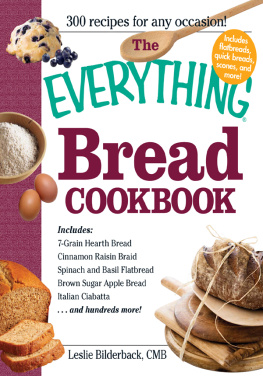

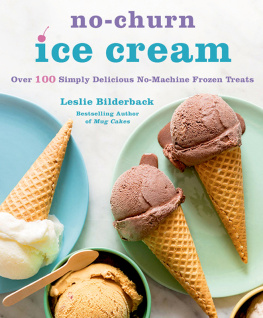

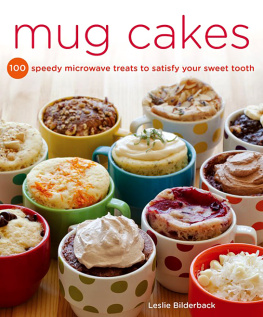




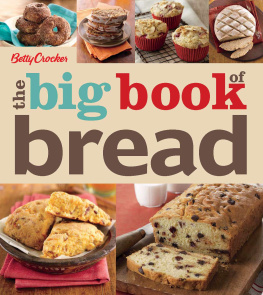
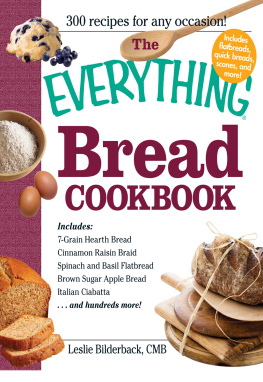
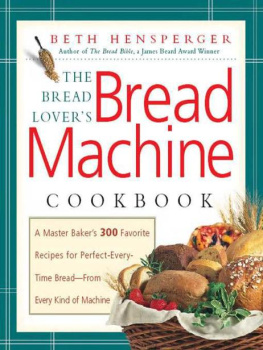


 Series!
Series!
